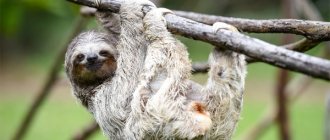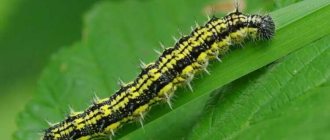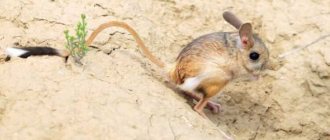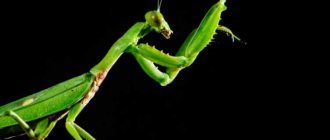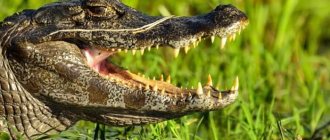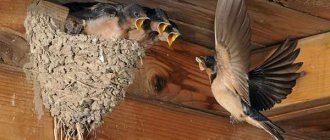Review author: “ZooVita”
The sloth is so slow and clumsy when you look at it somewhere in the zoo. At the same time, he is friendly and not afraid of people, which arouses sympathy and interest. Let's learn more about it in this article. Here you will read a lot of interesting information about this amazing animal.
Appearance of the animal sloth
The sloth is not like any other animal. The sloth's hook-shaped toes are its distinguishing feature. Different species of sloths have different numbers, but usually two, less often three. Their functional purpose is to provide the ability to hang on tree branches, since they are quite strong.
Sloths spend almost their entire lives on treetops, even sleeping, thanks to their amazing fingers that turn into long claws.
The sloth is not a large animal in size, its length usually does not exceed half a meter, and its weight is no more than six kilograms. The photo of the sloth shows that its fur is thick and smooth, brown-gray, with a greenish tint.
This shade is due to the presence of blue-green algae in the hairs of the wool, which appeared due to high humidity. This feature helps the animal to better camouflage itself in the greenery from enemies.
The head is very small in relation to the body, it has correspondingly tiny eyes and the same ears. The sloth animal in the photo has a very unusual appearance. Disproportionally long limbs give the animal some awkwardness, but functionally help in movement.
The front legs are longer than the hind legs. The tail is short, no more than 4 cm; some species of sloths do not have a tail at all. The name of the animal appeared because of its great love for sleep, which it enjoys for up to 17 hours a day.
Due to the disproportion of the body, this mammal has difficulty moving on the ground, so it even sleeps in a tree. But in the water, the sloth proves to be an excellent swimmer.
Another surprising thing is the sloth's unusually low body temperature. From 30 to 33 degrees, and sometimes even drops to 24. This happens due to the slow metabolic process.
Features of the coat
Sloths are animals that have shaggy and long hair. Its shade is slightly greenish. This is due to the presence of... algae in the wool. It turns out that the sloth's thick fur is full of life. Blue-green algae capable of photosynthesis develop in the fur and cannot live in other environments. They are microscopic, so they are not visible to the naked eye, but they give color to the cover.
Sloths' fur also does not grow like other animals. It is directed from the stomach to the back, and not vice versa. Behind the thick fur, the head with the same small eyes and ears is barely visible. The tail is very short, almost invisible. Leading a sedentary lifestyle, while remaining a wild animal, the sloth has the ability to conserve energy. This may explain why they are the slowest mammals on Earth. Their teeth are very primitive. This also affected the internal organs. By the way, in sloths they are also located in a very unusual way: the liver, for example, does not touch the abdominal wall and is turned towards the back, and the stomach and intestines are enormous. Even the trachea of these amazing animals is curled in an unusual way.
Sloth habitat
It's not hard to guess where sloths live. Of course, where there are a lot of broad-leaved trees. This representative of the suborder of mammals loves warm climates, so look for it in the tropics.
The crowns of trees in Brazil, Honduras, and Paraguay are the animal’s favorite places. Among the dense vegetation of Uruguay, Panama and Argentina, he also feels at home.
№10
These are the slowest animals in the world. So slow that they are literally covered with “moss”. The algae Trichophilus welckeri grows on their fur. This is what gives them their greenish tint.
However, it is worth noting that they benefit the animal. They give its brownish-grayish fur a green tint, which serves as a kind of camouflage that protects the animal from predators.
Sloth lifestyle
The sloth spends its entire life on a tree. Clinging to a branch, it hangs down with its back, and moves exclusively in search of food within the neighboring trees. Sloths are more active at night, and during the day they mostly sleep, exposing their bodies to the warm rays of the sun.
These animals can be called loners, but their interaction with their relatives has not been fully studied. Due to their slowness and clumsiness, sloths rarely collide with each other, but even if two individuals suddenly meet on the same tree, they usually coexist calmly and peacefully.
These mammals rarely make sounds, mostly hissing or whistling, depending on the type of sloth.
№6
After birth, the babies cling to their mother's belly and travel with her until they can feed themselves.
But even after they detach from her belly, they are in no hurry to leave her. Usually babies stay with their mother until they are 3 or 4 years old.
As with other animals, females mature faster than males. Female representatives are ready to give birth to offspring already 3 years after birth, while males mature only at 4-5 years of age.
Sloth diet
Considering the animal's habitat, it is not difficult to guess what sloths eat. They are herbivores, eating young leaves of trees, vines, and also eat buds, young shoots and fruits.
A plant-based diet causes the animal to have no fangs, and the teeth themselves are almost black in color, since they lack enamel. Their body is resistant to many plant poisons.
As long as there is enough vegetation left on the tree where the animal is sitting to quench its hunger and thirst, and it also quenches this on the tree with the help of dew accumulating on the leaves, it does not leave its place of stay.
A sloth's full stomach is almost a third of the weight of its entire body, and food in it is digested for three to four weeks before it enters the intestines.
A very capacious and extensible, multi-chambered stomach allows the sloth to relieve itself no more than once a week. This rare descent of the animal from the tree to the ground helps it survive, since being slow and clumsy, it is highly susceptible to the danger of falling into the clutches of a predator or into the hands of a hunter for the tender meat and thin skin of a sloth.
Due to the structure of the body, the sloth has to move very slowly, crawling at the base of the tree, where they usually make their toilet.
Hinterkaifeck massacre
On April 4, 1922, an entire family was found dead on a quiet German farm: Andreas Gruber, his wife, daughter, two grandchildren and a maid. All of them were killed with a pickaxe.
“Russian son” Timothy Dalton has become a complete copy of his handsome father: new photo
The baby whale tagged along with the people behind the boat and even allowed itself to be petted: video
Astrologer Mahesh Bang predicted the development of the coronavirus crisis and named the end date
Shortly before the tragedy, a series of strange events occurred: the previous maid quit, saying that the place was “cursed,” and Gruber himself found footprints in the snow leading to the house, but there were no traces back.
The bodies of family members were found in a barn. Shortly before they were found, neighbors saw smoke billowing from the chimney of the house. Apparently nothing was stolen, including the significant amount of money kept in the house.
The murder still remains unsolved. The family enjoyed a bad reputation; in addition, there was talk about Gruber’s intimate relationship with his daughter. According to one version, the tragedy was the revenge of one of the villagers, but there is no evidence of this.
Reproduction of the sloth animal
The population has a small number of males, so the process of reproduction itself occurs infrequently. Males are polygamous and find a female at the time of mating, and the next season it will be another female. Thus, one male can father more than seven cubs.
The vast majority of sloths breed year-round, except for the three-toed sloth, which does so from mid-summer to early fall.
The gestation period is about six months. Usually there is one newborn weighing about four hundred grams. Childbirth takes place again on a tree, where the female immediately attaches the baby to the nipple.
The baby feeds on mother's milk for four weeks, then gradually expands its diet, but remains a passenger on the mother's back for about another six months. After nine months, the cub leaves its mother for its own territory. Sexual maturity in females occurs at three years, and in males a year or two later.
№1
There are six species of sloths and they come in two families: Megalonychidae (two-toed sloths) and Bradypodidae (three-toed sloths).
Members of the family Bradypodidae (three-toed), almost the same size as an average dog, approximately 58-68 centimeters in length, and a body weight of about 8 kg.
Two-toed animals are slightly larger than three-toed ones, although they have many common features with them.
Enemies of the sloth
For the sloth on land, the threat comes mainly from predators from the cat family. This is a puma, panther, jaguar. The anaconda is also an enemy. The sloth is attacked when it descends from the tree to perform toileting.
Sometimes, during times of natural disasters, a sloth has to leave its home and swim across bodies of water.
Despite the fact that the animal swims excellently and can even hold its breath for more than half an hour under water, water is fraught with a mortal threat. This is because there an equally dangerous enemy lies in wait for the sloth - the caiman.
№13
Perhaps everyone has seen at least one photograph of a sloth smiling. And how can you not fall in love with this cute little face? But in reality, this is not a smile. It's all about the structure of the facial muscles, which simply creates the appearance of a smile. An animal may have a completely neutral mood, but its appearance will say: “I am happy.”
We also recommend reading: Interesting facts about camels
